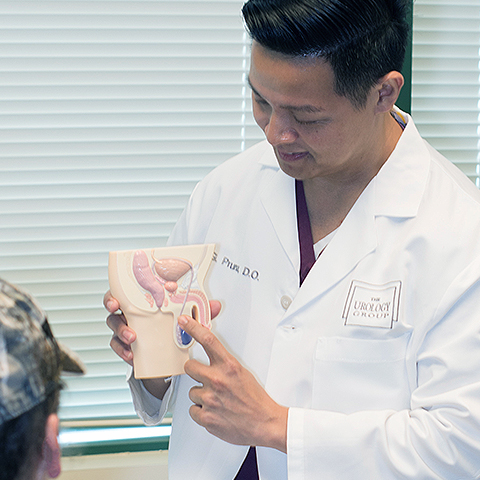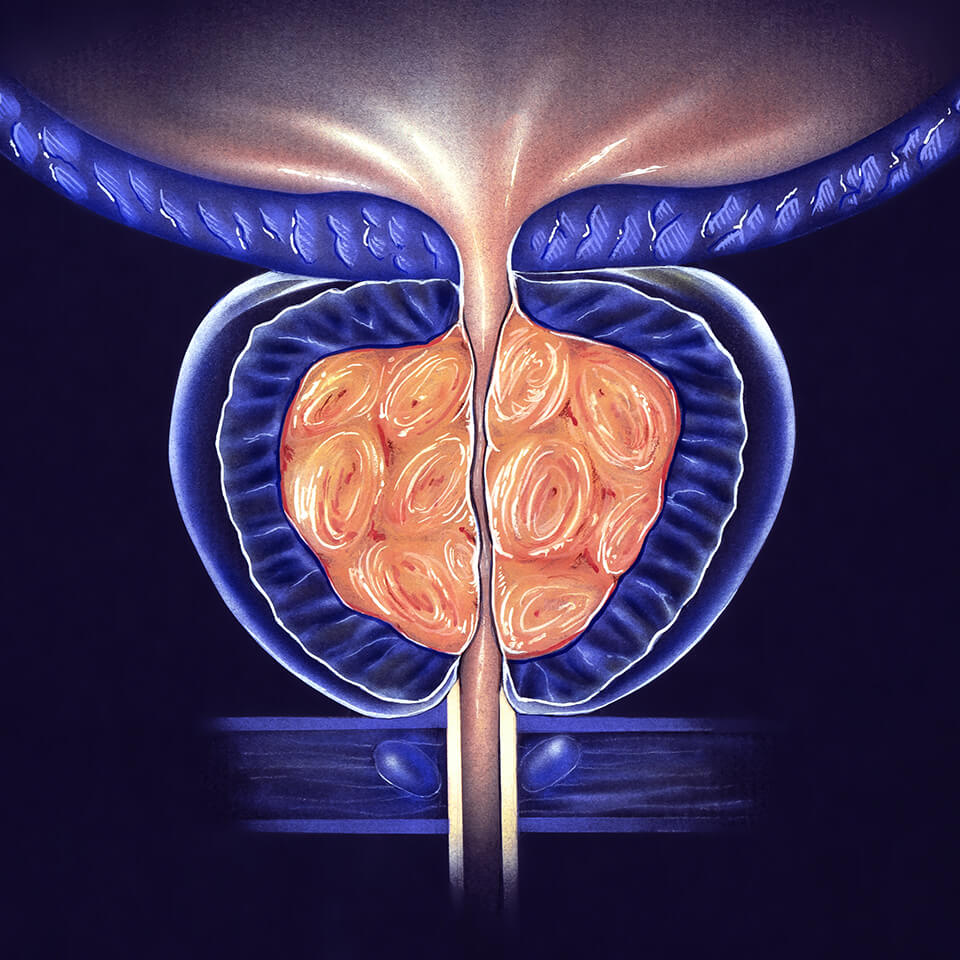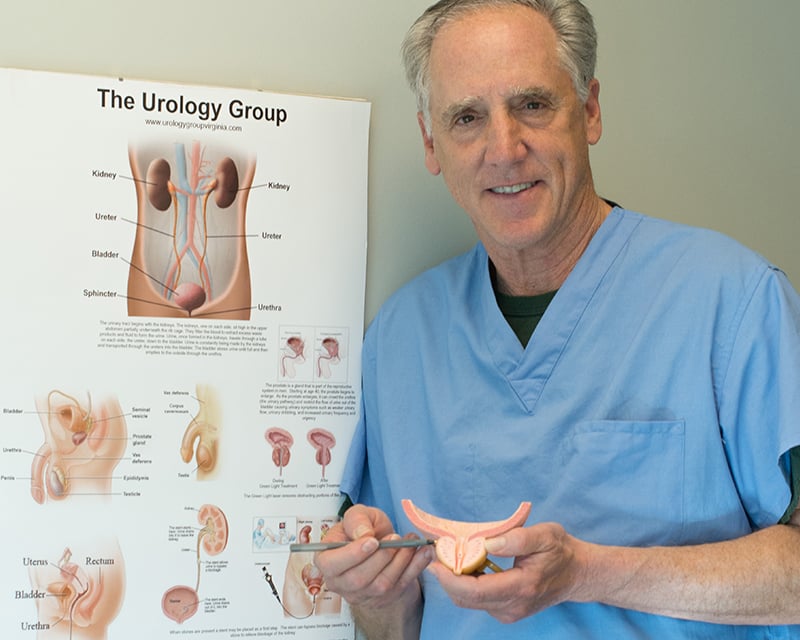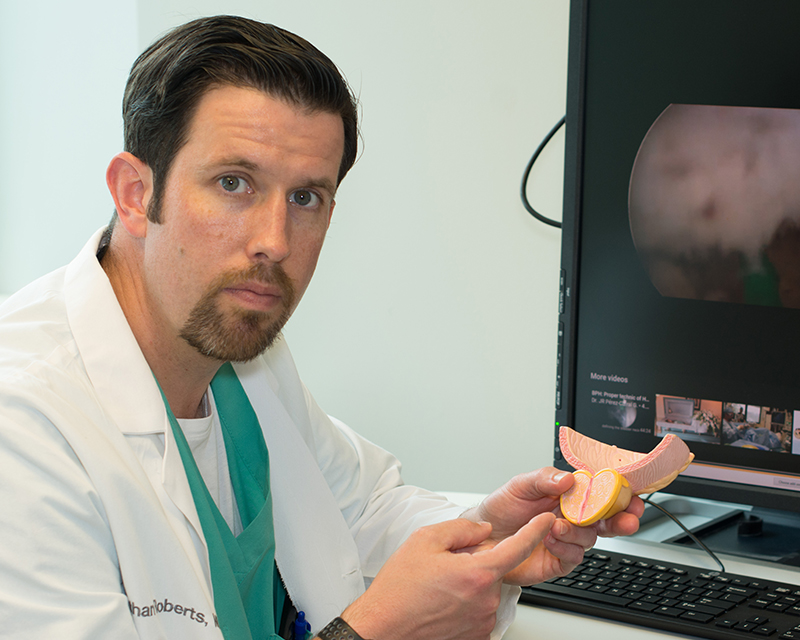Prostate Center

The prostate is a gland that is part of the male reproductive system. It makes fluid for the semen, the fluid that comes out at ejaculation. The prostate is located just below the urinary bladder and forms the first part of the urethra, the pathway the drains urine from the bladder to the outside. Changes occur in the prostate, which cause trouble in men.
First, the prostate enlarges and can block the urinary pathway causing voiding bother. Second, many men develop prostate cancer. The Urology Group offers a variety of evaluation and treatment options for these prostate conditions. For the enlarged prostate, comprehensive treatment avenues include drug therapy and the latest minimally invasive surgical techniques including laser treatment and urolift. For prostate cancer, our group offers current state of the art screening to determine if prostate cancer may be present, and for those who have prostate cancer that needs treatment, we offer the most up to date treatment techniques including DaVinci-based robot surgery and radioactive seed implant. The doctors in the urology group have particular expertise with treating both prostate enlargement and prostate cancer. Recognizing the well-established surgical concept that “high volumes equal better outcomes“ we have physicians who specialize in these techniques to provide patients the opportunity for optimum treatment results.





